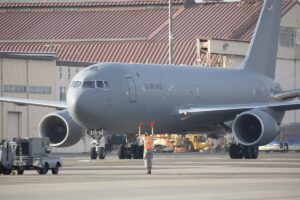
In the short term, two top acquisition priorities of the Japan Air Self-Defense Force (JASDF) are Boeing [BA] KC-46A Pegasus tankers and Northrop Grumman [NOC] E-2D Advanced Hawkeye aircraft--planes also in the inventory of the U.S. Air Force, a top JASDF official said on Nov. 5. “We need to make every effort [for] on-schedule acquisition, preferably ahead of schedule," JASDF Chief of Staff Gen. Shunji “Bert” Izutsu said during a Stimson Center forum with U.S. Air Force Lt. Gen. Kevin…














